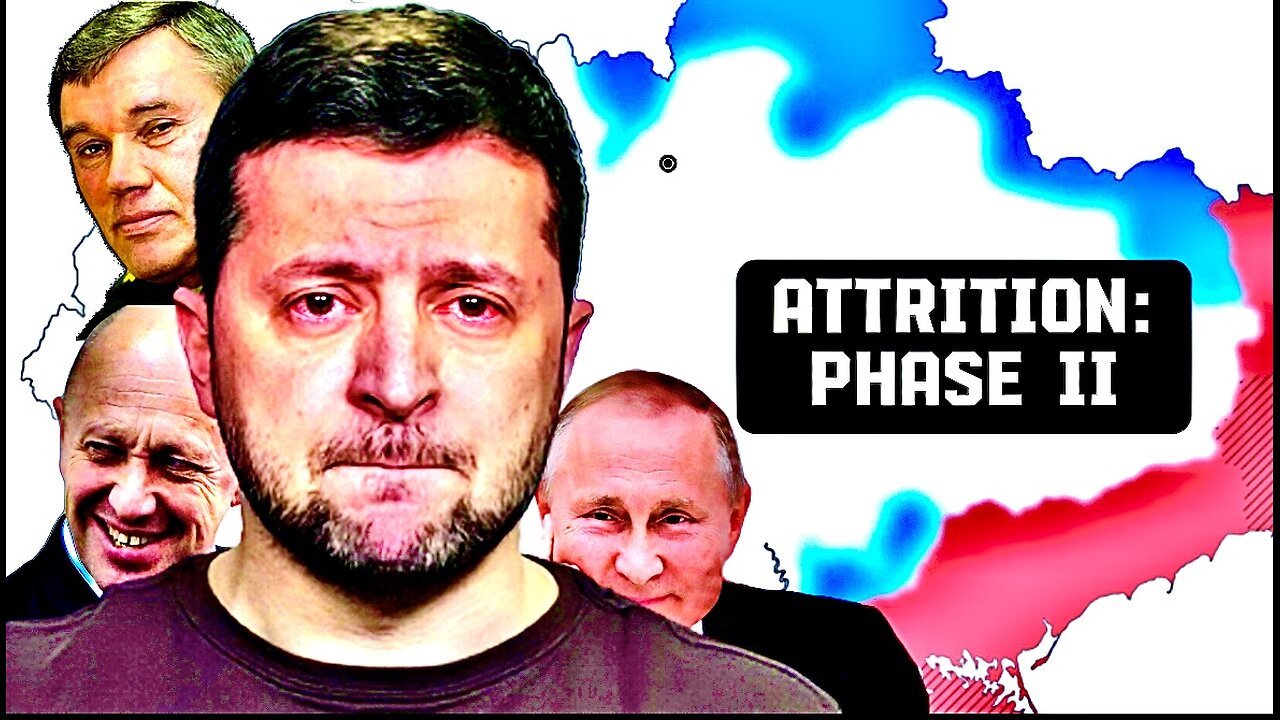Premium Only Content

Final Phase: Russian Offensive 2024
Attritional wars differs from Manoeuvre warfare, which NATO has trained the Ukrainians on and which is terrain focused. Attrition warfare requires massive industrial capacity to enable the replacement of losses, geographical depth to absorb a series of defeats. The side that accepts the attritional nature of the war and focuses on destroying the enemy forces rather than gaining terrain is most likely to win. This is why the Russians retreated from Kherson and Kharkiv in 2022 yet still saw them as victories. The west is not prepared for this kind of war. To most western experts, attritional strategy is counterintuitive. Historically, the west preferred the short “winner takes all” clash of professional armies. Recent war games such as CSIS’s war over Taiwan covered only one month of fighting. The possibility that the war would go on never entered the discussion.
Military operations in an attritional conflict are usually in 2 phases: The first phase ranges from initiation of hostilities to the point where sufficient combat power has been mobilized to allow decisive action. It will see little positional shifting on the ground, focusing on favorable exchange of losses and building up combat power in the rear. The second phase can commence after one side has met the following conditions: First- newly mobilized forces have completed their training and gained sufficient experience to make them combat effective formations capable of rapidly integrating all their assets in a cohesive manner. Second, the enemy’s strategic reserve is exhausted leaving it unable to reinforce the threatened sector. Third, fire and reconnaissance superiority has been achieved, allowing the attacker to effectively mass fire on a key sector while denying the enemy the same. Fourth, the enemy’s industrial sector is degraded to the point where it is unable to replace battlefield losses. In the case of fighting against a coalition of countries i.e. in this case, NATO, their industrial resources must also be exhausted or at least accounted for.
The Russian offensive operation likely to occur this summer should be launched across a broad front, seeking to overwhelm the enemy at multiple points with shallow attacks- this has already been occurring since the fall of Avdiivka. In attritional wars, any terrain that does not have a vital industrial center is irrelevant. It is always better to retreat and preserve forces, regardless of the political consequences. Fighting on disadvantageous terrain burns up units, losing experienced soldiers who are key to victory. The German obsession with Stalingrad in 1942 is a prime example of fighting on unfavorable terrain for political reasons. Bakhmut, no doubt would go down in history as another prime example. It is also wise to push the enemy into fighting on disadvantageous terrain through information operations, exploiting politically sensitive enemy objectives. This is where Prigozhin's theatrics in Bakhmut became important.
-
 8:36
8:36
Gamers Unbeaten
14 hours agoMarvel Rivals: The Menace of Jeff the Shark | Deep Thoughts While Gaming
11.3K1 -
 11:05
11:05
Guns & Gadgets 2nd Amendment News
9 hours agoBREAKING NEWS: ATF Reinstituting The Pistol Brace Ban?!
8.65K8 -
 48:04
48:04
PMG
11 hours ago $0.22 earned"Will Trump FINALLY Prosecute the 2020 Election Criminals? w/ FEC Commissioner Trey Trainor"
5.83K -
 LIVE
LIVE
Phyxicx
11 hours agoFinal Fantasy XIV - Finishing Stormblood - 1/11/2025
866 watching -
 9:21
9:21
BlackDiamondGunsandGear
11 hours agoBest of Both AR-15 + Ak47 = CMMG Mutant DISSENT
55.1K8 -
 4:27:23
4:27:23
JdaDelete
21 hours ago $11.59 earnedCool Spot - Sega Saturday + Pizza Tower (Encore)
102K6 -
 14:13
14:13
Tundra Tactical
6 hours ago $2.45 earnedMatt Livelsberger: Master Spy or Tragic Downfall?
25.7K6 -
 4:50:45
4:50:45
Rotella Games
12 hours agoMake the Manor Great Again | The Bread Chronicles | Day 2
62.1K2 -
 9:26
9:26
Jamesons Travels
1 day ago $7.62 earnedShawn Ryan CLOWNS Intel Expert & It GETS WEIRD!
65.8K7 -
 2:09:52
2:09:52
Jewels Jones Live ®
1 day agoTRUMP'S GOLDEN AGE | A Political Rendezvous - Ep. 105
83.3K36